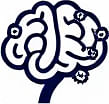The 80/20 Rule and Its Practical Applications
 by Lilian Nienow
by Lilian Nienow
The 80/20 Rule highlights how a small portion of efforts often yields most results. Originating from economics, it applies to business decisions, personal productivity, and cognitive habits, offering tools for better efficiency and focus in daily life. Explore its uses and benefits here.

The 80/20 Rule serves as a simple yet powerful concept that many use to improve their daily routines. This idea suggests that roughly 80% of outcomes come from just 20% of causes. For instance, in work settings, a minority of tasks might drive the majority of success.
First, consider the origins of this principle. Italian economist Vilfredo Pareto observed that 80% of Italy's land was owned by 20% of the population. Over time, this observation evolved into a broader tool across various fields. In business strategies, it helps identify which products or clients generate the most revenue. A company might find that a few key customers provide the bulk of profits, allowing leaders to prioritize those relationships.
In psychology, the 80/20 Rule relates to cognitive development by showing how habits form. People often discover that a small set of behaviors leads to significant personal growth. For example, consistent exercise or reading might account for most improvements in well-being, while other activities have little impact.
Applying the Rule in Everyday Life
To make the most of this concept, start by analyzing your own activities. Create a list of daily tasks and evaluate which ones deliver the greatest results. You could categorize them into high-impact and low-impact items. For professionals, this means focusing on high-value projects that align with career goals.
In personal development, the rule encourages selective attention. If 80% of happiness stems from 20% of experiences, such as time with family or hobbies, then emphasizing those areas becomes essential. This approach reduces overload and promotes balance.
Benefits for Lifelong Learners
For those interested in cognitive habits, applying the rule can streamline learning processes. Instead of spreading efforts thinly across many topics, concentrate on core materials that provide the most knowledge. Studies show that targeted practice leads to better retention and skill acquisition.
Business leaders also benefit by using this principle to optimize operations. By identifying the 20% of processes that cause 80% of issues, teams can address problems more effectively. This method fosters innovation and resource management.
Here are some practical steps to implement it:
- Track your activities for a week to spot patterns.
- Prioritize tasks based on their outcomes.
- Eliminate or delegate low-impact activities.
In relationships, the rule might reveal that a few interactions bring the most joy, helping individuals nurture those connections. Overall, it offers a framework for making smarter choices without unnecessary complication.
Real-World Examples
Take time management as an example. Many find that 80% of productivity comes from 20% of the workday, often the morning hours. By scheduling important tasks then, individuals can achieve more with less effort.
In health and fitness, focusing on key exercises like strength training might yield the majority of physical benefits, rather than scattered routines. This targeted approach supports long-term wellness.
The rule's versatility makes it appealing for curious minds. Whether in psychology or strategies for growth, it provides clear insights into how to allocate resources wisely.
In conclusion, embracing the 80/20 Rule can lead to profound changes. By recognizing that not all efforts are equal, people can achieve greater efficiency and satisfaction in various aspects of life.
